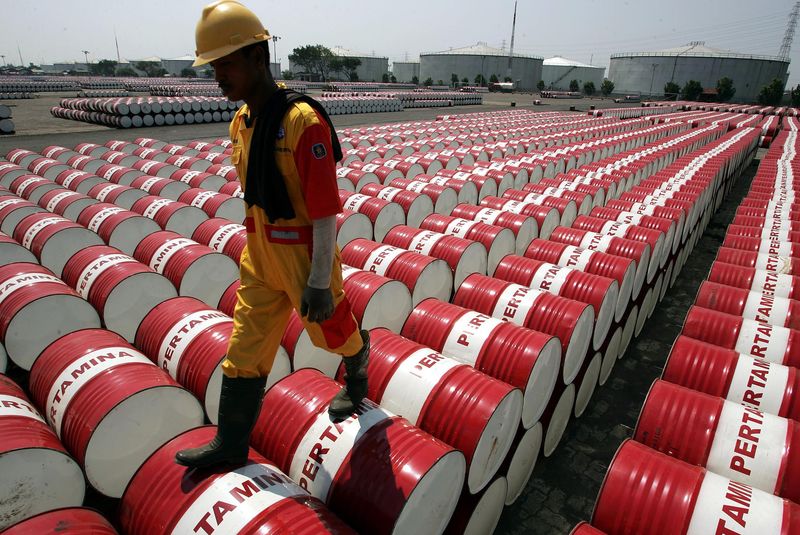Investing.com - Crude oil prices edged lower on Wednesday, amid speculation weekly supply data due later in the session will show a larger-than-expected gain in U.S. crude stockpiles as Hurricanes Harvey and Irma weighed on demand.
The U.S. Energy Information Administration will release its official weekly oil supplies report at 10:30AM ET (1430GMT). Analysts expect crude oil inventories rose by around 3.2 million barrels at the end of last week. If confirmed, it would mark the second weekly gain in a row.
Meanwhile, gasoline supplies are seen decreasing by about 2.0 million barrels and distillates are forecast to fall 1.5 million barrels.
After markets closed Tuesday, the American Petroleum Institute said that U.S. oil inventories increased by roughly 6.2 million barrels in the week ended September 8.
It was the second straight build after Hurricane Harvey shut production in some Gulf of Mexico fields and refineries in Texas as some domestic producers also trimmed output to avoid a larger glut at storage.
However, the API report also showed a drop of 7.9 million barrels in gasoline stocks, while distillate stocks fell by 1.8 million barrels, as key refineries in Houston and Corpus Christi were offline.
There are often sharp divergences between the API estimates and the official figures from EIA.
U.S. West Texas Intermediate (WTI) crude futures shed 7 cents, or around 0.2%, to $48.16 a barrel by 3:20AM ET (0720GMT). The U.S. benchmark advanced 16 cents, or 0.3%, on Tuesday.
Meanwhile, Brent crude futures, the benchmark for oil prices outside the U.S., dipped 18 cents, or 0.3%, to $54.09 a barrel, after gaining 43 cents, or 0.8%, in the prior session.
Tuesday's gains came as the latest OPEC report that showed oil production from the cartel fell last month for the first time since March.
The Organization of the Petroleum Exporting Countries said in its closely watched monthly report that output in August declined by 79,000 barrels a day to 32.76 million, driven mainly by a drop in Libya, Gabon, Venezuela and Iraq.
OPEC also slightly raised its outlook for global oil demand in 2017 and 2018. The cartel now believes the world will consume 96.77 million barrels a day this year and 98.12 million barrels a day next year.
Prices received additional support amid reports that OPEC and its allies are discussing extending by more than three months the oil production cuts that expire in March 2018, potentially prolonging them well into the second half of next year, according to people familiar with the matter.
OPEC and other producers, including Russia, have agreed to reduce output by about 1.8 million barrels per day until next March in a bid to reduce global oil inventories and support oil prices.
Elsewhere, gasoline futures declined 0.6 cents, or 0.4%, to $1.653 a gallon, while natural gas futures added 1.2 cents, or 0.4%, to $3.013 per million British thermal units.
